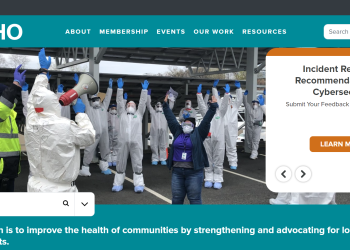 Mold is a common household nuisance and is found both inside and outside in varying amounts. For some people, mold and its spores cause very few problems, while for others it can be devastating—even life threatening. In the U.S., there are over two million children with chronic and other serious conditions that are at higher risk for the dangers that mold in their homes and schools can cause. This is due to their weakened immune systems that leave them more susceptible to infection and allow mold to have a more harmful impact. As many as one-third of the children in the U.S., including those who are considered to be “healthy,” are at risk for allergic reactions to mold. Babies that have been exposed to mold, even without incident, may be at a higher risk for developing allergies and even asthma as they get older, which is why mold exposure can be damaging even if no negative symptoms are immediately detected.
Mold is a common household nuisance and is found both inside and outside in varying amounts. For some people, mold and its spores cause very few problems, while for others it can be devastating—even life threatening. In the U.S., there are over two million children with chronic and other serious conditions that are at higher risk for the dangers that mold in their homes and schools can cause. This is due to their weakened immune systems that leave them more susceptible to infection and allow mold to have a more harmful impact. As many as one-third of the children in the U.S., including those who are considered to be “healthy,” are at risk for allergic reactions to mold. Babies that have been exposed to mold, even without incident, may be at a higher risk for developing allergies and even asthma as they get older, which is why mold exposure can be damaging even if no negative symptoms are immediately detected.
Symptoms of mold allergies are typically similar to those of other allergies, which can make it harder to determine the cause. These include sneezing, runny nose, itchy eyes, wheezing, and coughing. However, symptoms can escalate to more serious problems such as respiratory and circulatory issues. Mold flourishes in warm, damp environments, which is why warm summer temperatures frequently stir up mold allergies. Make sure to stock the medicine cabinet with the appropriate tools and treatments for babies and small children in order to be prepared to treat any symptoms.
It is important for local health departments to take steps to educate families in their area on this issue to prevent easily avoidable dangers. The remainder of this blog include valuable tips and resources on mitigating health risks related to mold exposure.
Stopping Mold Before It Grows
Prevention is always easier than treatment, especially with mold. Once it gets started, some molds are more difficult to control and may require additional treatments and work. Local health departments should educate their community members on taking the following preventative measures to reduce health risks associated with mold exposure.
Reduce humidity in the home:
- Because mold thrives in warm and wet conditions, try to keep dampness to a minimum. Install a dehumidifier if necessary. Open windows for ventilation, but close them when there are reports of higher humidity levels.
Household plants:
- Keep houseplants to a minimum in rooms that may be at higher risk of mold growth, such as rooms with high moisture levels and low ventilation.
- This is especially important in rooms that do not get visited often, such as the basement, where signs of mold growth can go undetected for longer periods of time.
Bathroom:
- Do not use carpeting in the bathroom, especially with children. Use washable mats or a towel on the floor instead. Dry the floor as soon as possible.
- Bathrooms are particularly vulnerable to mold growth, because they often do not have windows, which makes ventilating the damp area more difficult. If there is a window, open it often to dry out the bathroom.
- If there is an exhaust fan in the bathroom, turn it on as soon as the bath is done so that the room gets dried up quickly.
- Other common areas for mold growth include the shower curtain and around the bathtub and the sinks.
Kitchen:
- Any appliances that require water are common places for leaks and mold growth. Be sure to inspect under refrigerators, icemakers, dishwashers, coffee makers, etc.
Pipes/ Drainage:
- Repair any leaking pipes. Clean up any water immediately and use a fan to make sure that any moisture is dried.
- Increase the drainage away from the house to protect against leaks.
Summer Toys: The Perfect Hiding Spot for Mold
Pool, bath, and teething toys are breeding grounds for mold, because they can hold a lot of moisture and harbor mold growth undetected for long periods of time. Local health departments should provide the following prevention and treatment tips to limit mold exposure for children engaging in summertime activities and during bath time.
Pool toys:
- During summer months, kids are playing with many moisture-laden toys to keep cool such as pool noodles, water guns, absorbent animals and balls, and all sorts of inflatable pool toys. Make sure these and other water-friendly toys are squeezed out and left out to dry before storing them after use.
- Eliminate the risk by using alternative toys such as measuring cups, stacking blocks, and other items without places for water to hide. The advantage of these toys is the ability to toss them directly in the dishwasher after swimming or a bath.
Pool garments:
- Swimsuits and towels are also used and re-used frequently in the summertime. Do not leave either of these sitting in a ball somewhere. It is important to pick them up and spread them out in a ventilated or breeze spot so they can completely dry out before use.
- Be sure to regularly wash suits, towels, and any other damp clothing.
Bath toys:
- For regular bath toys, one option is to plug the small holes with water-resistant glue. This keeps them from squeaking and/or shooting water but keeps them mold free.
- Boil bath toys about once a week, and allow them to air dry completely.
- Soak toys in white vinegar overnight to clean them. The vinegar odor will dissipate as it dries.
Teething toys:
- Teething toys can also harbor moisture for mold to grow. Squeeze all of the water or drool out of rubber or mesh teething toys and clean them using a damp cloth.
- Teething and bath toys can be run through the sanitize cycle on the dishwasher and then allowed to air dry.
A Surprising Source of Mold
One of the most surprising sources of mold problems can be found in children’s sippy cups/water bottles, used increasingly often during summer months as a source of hydration. Many people do not completely disassemble sippy cups when they are cleaning them, greatly increasing the potential for mold growth. Local health departments should provide the following cleaning steps for sippy cups/ water bottles to minimize and eliminate mold growth:
Sippy cups:
- If there is a rubber or plastic ring on the lid of the sippy cup, make sure to pull it out and rinse under it carefully.
- Look for sippy cups with solid, one-piece lids, but make sure to clean the spout or drinking straw as well.
- All of the cups and parts can be washed in the dishwasher. Make sure that everything is completely dry before reassembling them.
Water bottles:
- Disposable water bottles should not be reused, not only because of the risk of mold but because the plastic can leach into the water and can be harmful to a child’s health.
- Metal water bottles are good because they keep drinks cooler and are easy to sanitize in the dishwasher.
- Whenever in doubt over whether mold was completely cleaned from a toy, it is best to be safe and throw it out.
The Critical Role of Local Health Departments
Families with young children should be able to enjoy cooling off in the summer heat risk-free. Unfortunately, many parents and guardians are unaware of the hidden dangers that lurk in the nooks and crannies of their child’s toys. As a result, it is vital that local health departments provide ongoing and visible guidance to highlight the various health risks associated with mold and how to protect their child from exposure. For example, local health officials can disseminate the facts and tips included in this blog via their websites and social media pages, or by engaging in traditional community outreach (e.g., distributing pamphlets, one-pagers).
For additional resources on mold and indoor air quality, please visit:
- NACCHO policy statement: Indoor Air Quality
- Department of Housing and Urban Development video: Ten Steps for Mold Removal
- Department of Housing and Urban Development webpage: About Mold and Moisture
- Centers for Disease Control and Prevention website: Mold
- Environmental Protection Agency website: Mold








